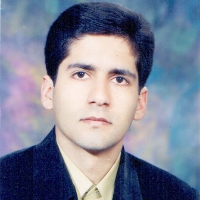Decontextualization and detextualization on the murals of the wall of the City theater Metro Station in Tehran
Author(s):
Article Type:
Research/Original Article (دارای رتبه معتبر)
Abstract:
Murals are one of the works that are included a range of patterns from past to present, including themes derived from Iranian painting, calligraphy or pictures of architectural works. These paintings in comparison with original context have gradually changed in functions and materials according to the needs of the community and the new context.Also, given that metro stations are considered as public spaces; Their role is important for communication and interaction among people. Therefore, it is necessary to pay attention to the features of public art and to understand how they are perceived and efforts to bring their experiences closer to different citizens. Therefore, the factors influencing the perception and visual preferences of public art audiences can improve the perception process of these works. Such an understanding of the quality of space that hosts a public art work will also be affected. Visual quality is measurable from three dimensions: functional dimension: (readability), identity dimension: (beauty), semantic dimension: (meaning and message) that this article focuses on two dimensions of identity and meaning. Despite the expansion of cities and the increase in their populations, the need for high-speed public transport and the establishment of subsurface metro lines and related stations, the use of public art to attract audiences in this area has been less considered.One of the most popular public spaces in the city of Tehran is the metro station of the city's theater, which houses various wall paintings. Some of these wall paintings borrowed from their traditional arts, and they see a lot of memories for the viewer's mind. Therefore, the greater the degree of this adaptation, the effect will be to make the sense of satisfaction more successful.The good of this paper is to investigate the intuitive features of patterns and traditional calligraphy as decontextualization and detextualization in mural of City theater Metro Station. It seems the changing nature of the media type, materials and also how to express has turned the fine and court art into human and public art. The current study aimed at answering the question of what characteristics of City theater Metro Station's murals can be verified as decontextualization and detextualization? This research has been done through descriptive-analytic method and by using case study. In order to collect information in the theoretical part of the literature, library documents and in the field of observation, questionnaires and interviews were used. Due to the large volume of murals at various metro stations that were randomly selected and visited, The city's theater station, due to the large number of murals in the path of switching lines, which allows more people to visit them, The variety and content of works of public art, proximity to the city's theater and student park and the existence of high levels of walls were selected. Then, from 9 murals at the station, One of the pictures of 9 murals in 388 questionnaires filled by citizens and 13 questionnaires of visual arts specialists Selected as one of three preferred preferences, analyzed. The design of the questionnaire was based on the visual preferences technique (VPS) and the analysis method using the spss software.This art work that has been selected as a case study has the motifs, partly inspired by calligraphy and the other part, inspired by the art of book writing. And these motives, borrowed from two images; one of the book Khamseh military titled "Killing Bahram Gore Dragon" by Mohammad Zaman, painter late Safavid period, and the other "The sequel of the old man of shitty" by a certain image, painter of the time of the Shah Abbas, from the book of the Jamie. Applying the Iranian motives, in addition to preserving cultural identity, if there is a logical connection between the visual elements of an effect, improves the understanding of the message of the effect by the viewer and, by promoting the quality of the environment, results in meaning and satisfaction in the audience. Observation technique and library studies are used in order to collect information. The result indicate that artist has used intelligent device for preservation of iranian identity by using the existing motifs and measures such as decontextualization and detextualization that creates changes in structures, elements, and materials. The above changes in structures and elements have been achieved the relationships of visual elements in murals of City theater Metro Station. The above changes indicate the change in function and differences that distinguish today's world from the past.
Keywords:
Language:
Persian
Published:
Journal of Theoretical principles of Visual Arts, Volume:3 Issue: 2, 2019
Pages:
69 to 84
https://magiran.com/p2021806
مقالات دیگری از این نویسنده (گان)
-
An Analytical Investigation of the Recurrence of Neighborhood-Based Development Concept and its Place in Iran’s Experiences
*
Journal of Community Development, -
Evaluation of the application of grounded theory methodology principles in Persian urban planning and design research
*, Ehsan Babaei Salanghooch
Motaleate Shahri,



